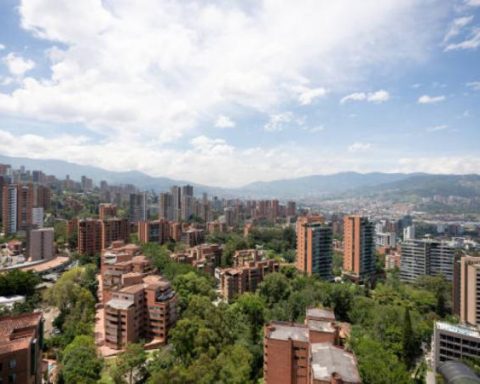
A house with a backyard and space to set up an office was Giovanna Almeida’s dream before the world heard of such a coronavirus for the first time.
Giovanna left Belo Horizonte, Brazil for New York, USA in 2015 and was living in Brooklyn when she had to self-isolate at home during the height of the pandemic.
When I still went to the office, I would spend an hour commuting from home to work.
The possibility of holding meetings and reporting from home completely changed the life of this Brazilian, who brought forward her project of spending less and living with more space by at least two years.
Today, she and her husband live in New Jersey, a neighboring state to New York, where their 11-month-old baby will soon be able to run free on the lawn behind their recently purchased home.
Giovana is a typical example of a trend that has made New York one of the states that has lost the most residents in the last two years.
The island of Manhattan is the county in the entire US with the largest number of residents looking for houses and apartments in other cities or states: 200,000 in total, as of March 2020.
Two other New York counties, Queens and Brooklyn, also saw many residents leave: 51,000 from Queens and another 88,000 from Brooklyn, where Giovanna lived.
Columbia University Business School professor Stijn Van Nieuwerburgh researches real estate and finance and worries about the future of the city he chose to live in in 2003.
He likes New York, but believes authorities need to take urgent action to prevent the city from entering a vicious cycle of declining tax revenue, a shrinking population, relocating businesses and increasingly precarious services.
“That was what happened in the ’70s,” he recalls.
According to a survey by the Partnership for New York City organization, remote work, at least for part of the week, is here to stay.
As of October 2021, 54% of city office workers were working from home. Only 8% commuted each day to work in offices and other facilities.
In April 2022, there were 28% of employees working remotely, but the hybrid model caught on and the number of those working from the office every day remained at just 8%.
In the last survey, from last September, 16% continued to work from home all the time and only 9% went to work in person every day.
As a result, many offices are empty.
Now, at the end of the year, the city council and the government of the state of New York announced the end of the work of a commission that spent six months studying precisely this problem: the evasion of businesses and residents.
It is enough to take a walk down 57th street, between Fifth and Sixth avenues, to understand what is happening.
This area, which used to have some of the most expensive commercial square footage in the city, now has several closed shops and completely empty office buildings, with “for rent” signs.
One of the commission’s proposals is to convert these offices into residences. Professor Nieuwerburgh thinks the idea is good and cheap. Just change the zoning law.
“You can keep the store on the first floor and convert the offices on the other floors, because it will generate demand for commerce,” he says.
This coming and going of people who end up stopping at the cafeteria, sitting down to eat or deciding to buy something at the store on the way home, ensures the survival of small and medium-sized businesses.
Juarez Bochi has not left New York yet, but he has been seriously considering moving with his wife to another city.
He was forced to work from home at the start of the pandemic and never returned to the office. In fact, if he can stay that way, he even prefers it.
With the autonomy to manage her own time, she now jogs in the morning, yet at 8 am she is already working.
He rarely goes through the area he used to frequent, on the way to his old office. Today he is more in Brooklyn, where he lives.
Because so many people did the same, the subway’s revenue plummeted. Shops, bars and restaurants are also being affected.
But, in Nieuwerburgh’s view, New York’s future lies in going the other way: bringing back those who left and making sure the city’s population is diverse in terms of income and interests.
“No city can live only on professionals in finance, technology and lawyers,” he says.
In order to be a vibrant city again, it will also be necessary to keep the artists, hotel and restaurant employees, the people who work here in the entertainment industry.
“Before the pandemic, 60 million tourists visited New York every year,” recalls the professor, who warns that “without Broadway, without theaters and restaurants, they will not come.”
And the council accounts also need help.
The professor explains that, starting in 2024, New York will have a deficit of $10 billion each year with a budget of $100 billion. That is, 10% of the budget.
It’s such a big hole that the city will have to end up raising revenue or cutting spending. In other words: more taxes and less services.
The risk is seeing New York repeat what it faced in the 1970s and what Detroit has yet to overcome.
So, Stijn Van Nieuwerburgh advises: the faster the city votes to change the zoning and convert commercial buildings to residential buildings, the faster tax collections will grow again, ensuring that transportation, education and security services are maintained.
Remember that you can receive notifications from BBC Mundo. Download the new version of our app and activate them so you don’t miss out on our best content.

















